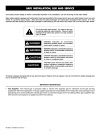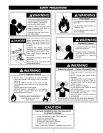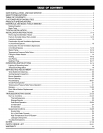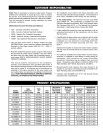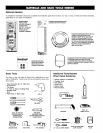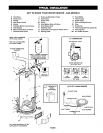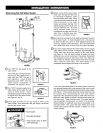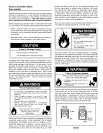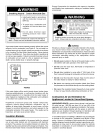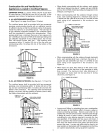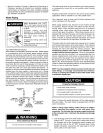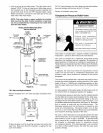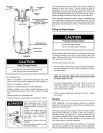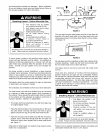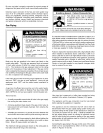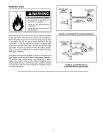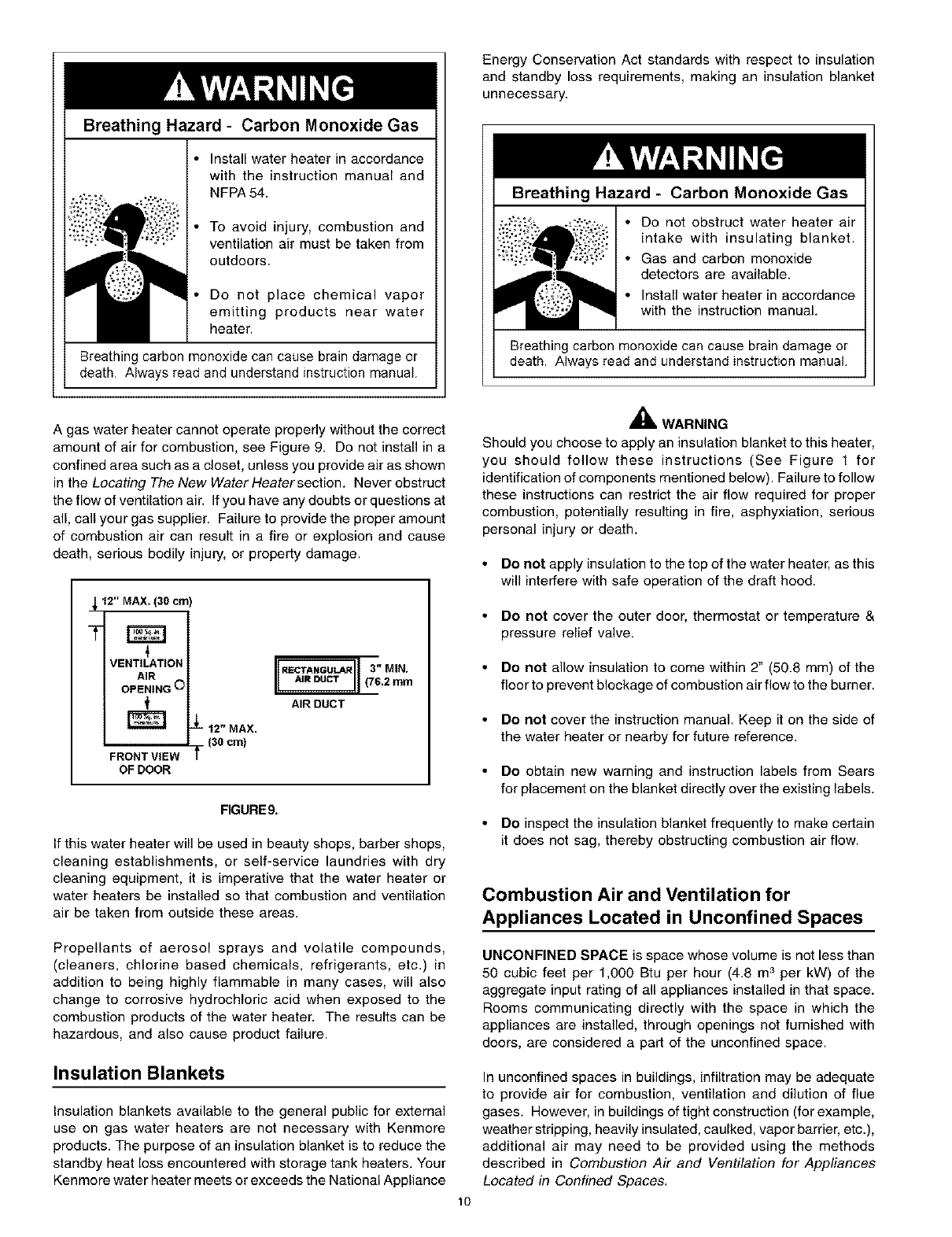
Breathing Hazard - Carbon Monoxide Gas
Install water heater in accordance
with the instruction manual and
NFPA 54.
To avoid injury, combustion and
ventilation air must be taken from
outdoors.
Do not place chemical vapor
emitting products near water
heater.
Breathing carbon monoxide can cause brain damage or
death. Always read and understand instruction manual.
A gas water heater cannot operate properly without the correct
amount of air for combustion, see Figure 9. Do not install in a
confined area such as a closet, unless you provide air as shown
in the Locating The New Water Heatersectien. Never obstruct
the flew of ventilation air. If you have any doubts or questions at
all, call your gas supplier. Failure to provide the proper amount
of combustion air can result in a fire or explosion and cause
death, serious bodily injury, or property damage.
12" MAX. (30 cm)
4
VENTILATION
AIR
OPENING O
FRONT VIEW
OF DOOR
AIR DUCT
JL 12- MAX.
1' (s0cm)
FIGURE9.
If this water heater will be used in beauty shops, barber shops,
cleaning establishments, or self-service laundries with dry
cleaning equipment, it is imperative that the water heater or
water heaters be installed so that combustion and ventilation
air be taken from outside these areas.
Propellants of aerosol sprays and volatile compounds,
(cleaners, chlorine based chemicals, refrigerants, etc.) in
addition to being highly flammable in many cases, will also
change to corrosive hydrochloric acid when exposed to the
combustion products of the water heater. The results can be
hazardous, and also cause product failure.
Insulation Blankets
Insulation blankets available to the general public for external
use on gas water heaters are net necessary with Kenmere
products. The purpose of an insulation blanket is to reduce the
standby heat less encountered with storage tank heaters. Your
Kenmere water heater meets or exceeds the National Appliance
Energy Conservation Act standards with respect to insulation
and standby loss requirements, making an insulation blanket
unnecessary.
Breathing Hazard - Carbon Monoxide Gas
•":_'-_ o(__:;'_;._, • Do not obstruct water heater air
,,. ,,,.,. intake with insulating blanket.
_"ii_i _i_: ° Gas and carbon monoxide
•"*',_;'--;.._I._,_ _ detectors are available.
•" • Install water heater in accordance
_Z_.:_l with the instruction manual.
Breathing carbon monoxide can cause brain damage or
death. Always read and understand instructionmanual
_' WARNING
Should you choose to apply an insulation blanket to this heater,
you should follow these instructions (See Figure 1 for
identification of components mentioned below). Failure to fellow
these instructions can restrict the air flew required for proper
combustion, potentially resulting in fire, asphyxiation, serious
personal injury or death.
Do not apply insulation to the top of the water heater, as this
will interfere with safe operation of the draft hood.
Do not cover the outer door, thermostat or temperature &
pressure relief valve.
Do not allow insulation to come within 2" (50.8 mm) of the
fleer to prevent blockage of combustion air flow to the burner.
Do not cover the instruction manual. Keep it on the side of
the water heater or nearby for future reference.
Do obtain new warning and instruction labels from Sears
for placement on the blanket directly over the existing labels.
Do inspect the insulation blanket frequently to make certain
it does net sag, thereby obstructing combustion air flow.
10
Combustion Air and Ventilation for
Appliances Located in Unconfined Spaces
UNCONFINED SPACE is space whose volume is not less than
50 cubic feet per 1,000 Btu per hour (4.8 ms per kW) of the
aggregate input rating of all appliances installed in that space.
Rooms communicating directly with the space in which the
appliances are installed, through openings net furnished with
doors, are considered a part of the unconfined space.
In unconfined spaces in buildings, infiltration may be adequate
to provide air for combustion, ventilation and dilution of flue
gases. However, in buildings of tight construction (for example,
weather stripping, heavily insulated, caulked, vapor barrier, etc.),
additional air may need to be provided using the methods
described in Combustion Air and Ventilation for Appliances
Located in Confined Spaces.



